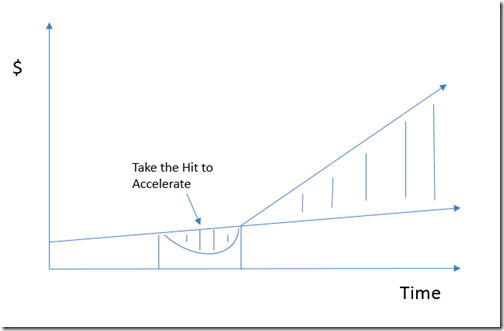Nobody Wants to Invest
A colleague sketched a visual of a recurring theme he runs into, where “nobody wants to invest” in the time, to take a step back, to leap frog forward. The visual looked like this:
I’ve seen this pattern, too. There are lots of reasons. Many of them come down to change is hard, and it’s easy for a culture to be risk-averse.
One of the best solutions I tend to see is to factor out the change into a “pilot.” It’s the “innovate, then integrate” play. It works well because it doesn’t jeopardize the mainstream process or product, and it creates enough space for the innovation play to be tested and get the kinks out, before adopting back into the main process.
Of course, you still need somebody to invest in the pilot, but at least you’ve taken the step to reduce some of the friction and risk. The next key is to show how your pilot will help the big picture in the long run. This is where you can use hypothesis and tests. They are your connection back to the bigger picture. If your pilot works well, then your hypotheses and tests will help demonstrate how you can impact the bigger picture if you go mainstream. Without relevant hypotheses and tests, then your pilot gets viewed as a play thing and a science project. Hypotheses are the key to mainstreaming your innovation.
That’s another way how innovation gets done.
